LatinaLista — “Palenque Cultural Tambillo” is a cultural center dedicated to the continuing artistic traditions of the Afroecuadorean town of Tambillo and its nationally renowned travelling marimba music and dance troupe Incrustados en el Manglar. This group provides an intergenerational link for the transmission of the oral and physical history of the town of Tambillo, allowing children of all ages a safe space to develop strong identities based in an awareness of their personal and cultural heritage.
As part of a larger investigation of Afro-ecuadorean culture, its musical traditions and its present challenges, The Ochún Foundation, Caá Porá Architects and Siete86 Architects identified the town of Tambillo as an ideal place to begin the pilot program of “Palenques Culturales”. The “Palenques” project is dedicated to the creation of a network of cultural centers in communities that form part of the “region of the marimba” in the province of Esmeraldas, Ecuador. This cultural region was recently inscribed in 2015 as a part of the UNESCO list of the intangible heritage of humanity.
These celebrated traditions are at risk because of intra-generational learning gaps, immigration and other social factors.
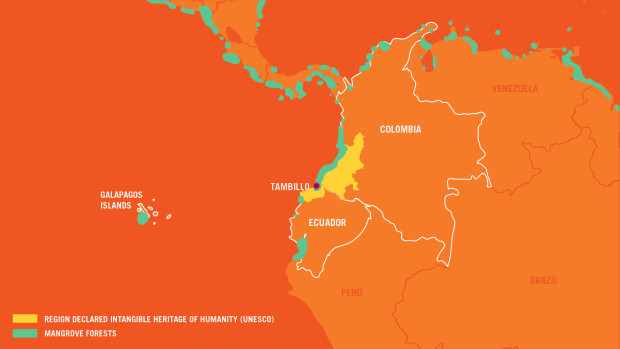
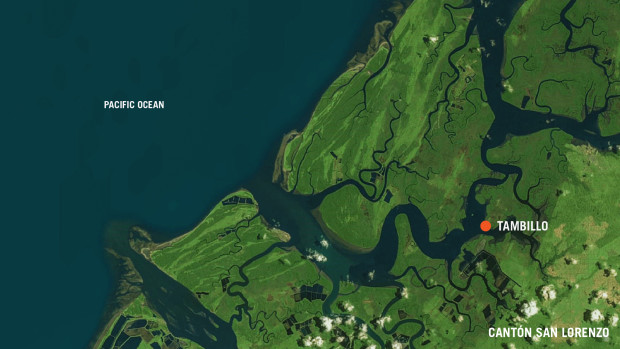
The offices of Caá Porá, Siete86 and Ingeniera Alternativa began a process of a participatory research and design workshops with the community of Tambillo in October of 2015. These workshops have resulted in the design of a cultural complex composed of: a large performance and meeting hall, two multi-use classrooms and rehearsal spaces, an artisanal workshop for the fabrication of instruments and a block of public bathrooms using ecologically friendly water systems. These spaces have been designed taking into account the needs of the cultural group, the community infrastructure issues and the development of easily replicable construction technology for the future development of the community.
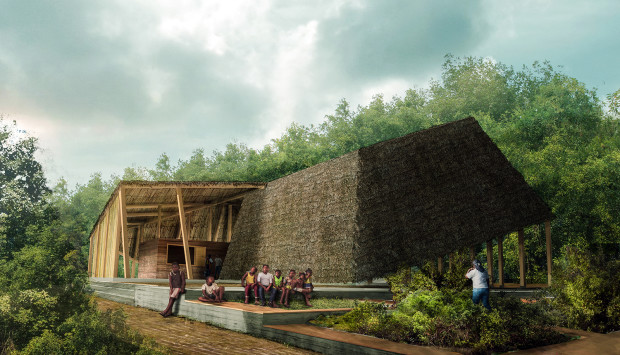
THE SITUATION
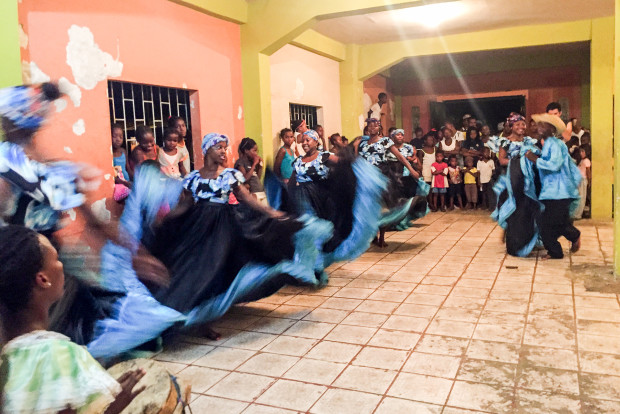
In 2005, Alfredo García, Héctor Ortiz and Malena Solís, all schoolteachers at the time, created the Incrustados en Manglar (loosely translated as Embedded in the Mangrove) association. This music and dance group accepts children between 5 and 19 years of age and is by far the largest youth group in the town of Tambillo. In the past decade this group has achieved national recognition for their touring shows and work preserving and growing the traditional, endemic marimba musical styles. The group has achieved this through grassroots community organization and support. The lack of external sponsorship has prevented the leaders of Incrustados en el Manglar from creating suitable infrastructure for teaching and performing. Currently they practice every afternoon on the cracked tile floor of the town municipal building.

This space is far from suitable for as a rehearsal space and presents strong challenges of size, upkeep, acoustics and temperature. Regardless of these difficulties, there are many children and adults that gather every evening, even outside looking in through the windows, to watch the development of original choreographies and musical themes.
Tambillo has an estimated population of 2,200 people currently, of which 60% are between the ages of 5 and 19. This imbalance results in social health problems such as: sexual violence and exploitation, intra-family violence, loss of self identity amongst youth and growth of gangs and violence, lack of self-identification in school materials and education, psychological abuse, teenage pregnancies, child labor amongst many others. Working with the children has been a huge part of this project, as they share their dreams and concerns as part of the design process.
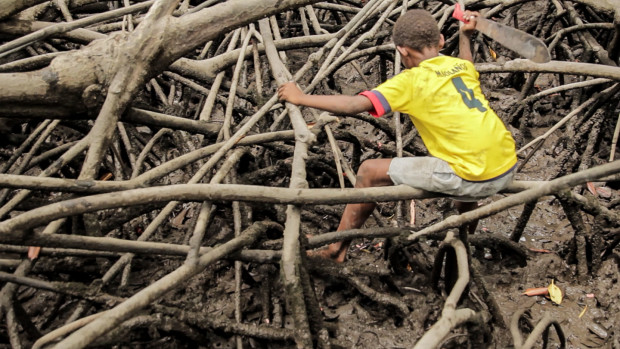
THE PROJECT
The design of the “Palenque Cultural Tambillo” is the result of participatory workshops with the community and extensive architectural and social investigation by the Ochún Foundation, Caá Porá and Siete86. The main desire and need of the community was the construction of a space that represented their cultural history and construction methods. As architects we strove to understand the lengthy history, technical aspects and ceremonial significance of each material and spatial configuration. We interviewed master carpenters, fishermen and women, storytellers, dancers and musicians from Tambillo and the neighboring communities to understand the best woods for each phase of construction, traditional joinery methods and to understand the meaning and legends behind the music and dances.
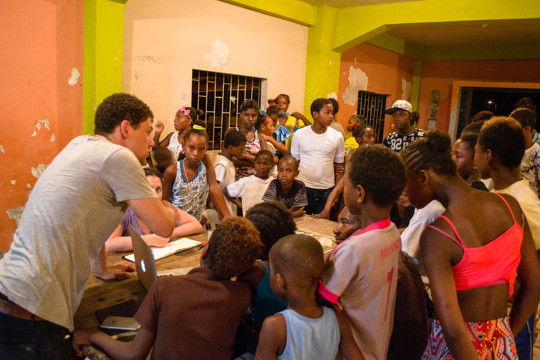
We also investigated the ceremonial spaces of the African Diaspora and pre-colonial African civilizations in Cameroon, Nigeria, the Congo amongst others to understand spatial configuration and the ceremonial use of similar materials to those available in Tambillo. This process of the reconstruction of architectural ceremonial identities was inspired by the similar reconstruction of social and spiritual identity undertaken by many communities of the African Diaspora.
Based on this information we worked with engineers to devise modern and replicable construction solutions for the construction of the community center.
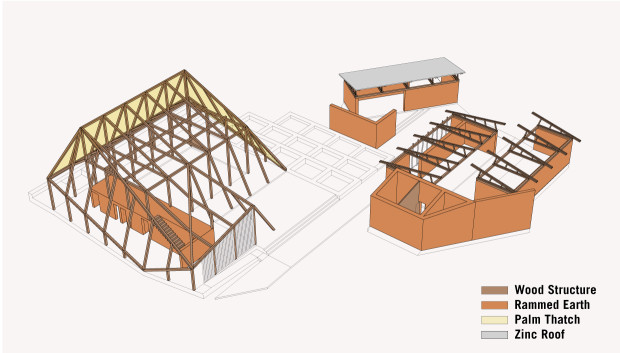
During the process of investigation, many of the community members in Tambillo let us visit their land to see what construction materials where locally available. The challenges of building in a protected ecological reserve and in a mangrove grove inspired engineering solutions and creative use of materials. One example of the solutions developed with our structural engineer is the use of oyster and conch shells that are discarded as part of the heavy fishing industry in Tambillo as additives to our rammed earth walls and concrete foundations. The main structure elements of the performance hall are locally and responsibly sourced wood. The roof of the dance hall is made of palm thatch, while the classrooms and workshops have zinc roofs with acoustical and thermal insulation.
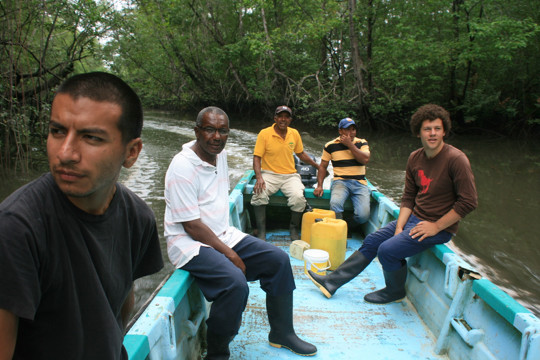
The “Palenque Cultural Tambillo” is designed as a refuge from the pressures of everyday life in Tambillo. The spaces are sheltered and conceived as a series of intimate and public courtyards. These flexible outdoor spaces are shaded and usable during the hot tropical days. Each building has a direct relationship with nature, and an important part of the project is the outside gardens that will function as nurseries for future reforestation initiatives.
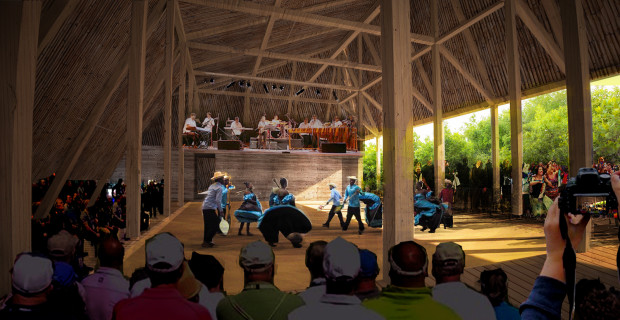
The performance hall has a dance floor made of sand that hearkens to the traditional dances in outdoor spaces. The musicians are on a second level permitting clear sight lines for the spectators. The roof shell will conserve excellent acoustics while the palm thatch will absorb excess percussive sound. One side of the building is opened towards the mangroves to emphasize the direct relationship between the traditional storytelling role of the dances and the natural environment that inspires them.
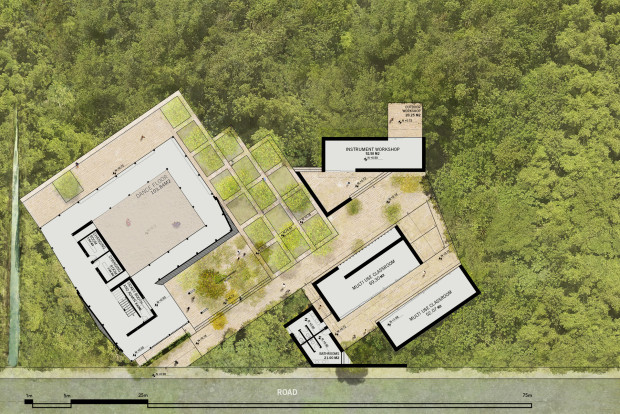
The classrooms and workshops are more closely aligned to current local construction. They have been designed as examples of cost-accessible, earthquake-proof, easily constructed, climactically comfortable buildings using materials that can be locally sourced with minimal ecological impact. This is very important in Tambillo and other communities in the region where, because of social aspirations to homogenous modernity, concrete block has replaced much more cost and climactically efficient traditional forms of construction.
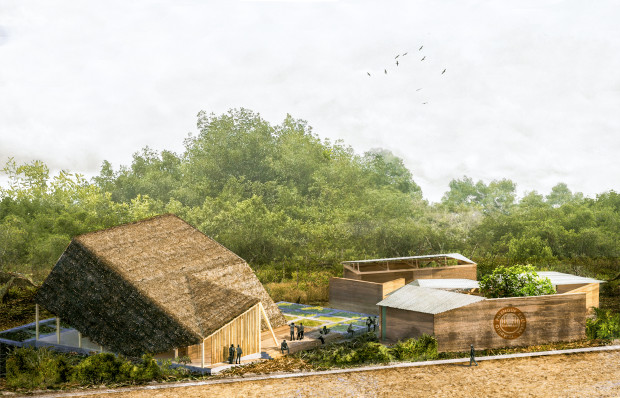
These buildings will be tools for the Incrustados en el Manglar group as they grow. The Ochún Foundation is assisting the members of this association in the legal process of becoming a foundation able to channel external resources to the community. The creation of a local foundation is an important aspect of this project, as it will permit local actors larger agency in the type of external investments that are realized in their community.
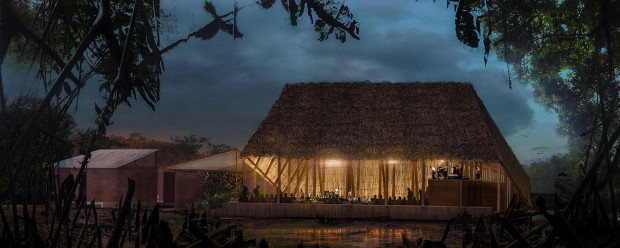
The campaign’s goal is $40,000.



